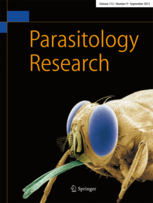Ver ítem
- xmlui.general.dspace_homeCentros Regionales y EEAsCentro Regional Santa FeEEA RafaelaArtículos científicosxmlui.ArtifactBrowser.ItemViewer.trail
- Inicio
- Centros Regionales y EEAs
- Centro Regional Santa Fe
- EEA Rafaela
- Artículos científicos
- Ver ítem
Alternative applications of the strategic control against the cattle tick Rhipicephalus (Boophilus) microplus in a subtropical area
Resumen
Although different evaluations on the efficacy of the strategic control against Rhipicephalus microplus have been performed, the effects of successive applications of these schemes on the abundance of cattle ticks have not been evaluated. The aim of this work was to analyse the long-term effect of strategic applications of chemical acaricides on the R. microplus infestation in cattle in a subtropical area. These schemes are based on the application of
[ver mas...]
Although different evaluations on the efficacy of the strategic control against Rhipicephalus microplus have been performed, the effects of successive applications of these schemes on the abundance of cattle ticks have not been evaluated. The aim of this work was to analyse the long-term effect of strategic applications of chemical acaricides on the R. microplus infestation in cattle in a subtropical area. These schemes are based on the application of three annual treatments between late winter and late spring. Additionally, a trial to evaluate the efficacy of the strategic control by deferring the first treatment from late winter to spring and the third treatment from late spring to summer was also carried out. The efficacy of the strategic control applied on 3 consecutive years was significant. The tick infestation in the treated group always remained at low levels, because mean number of ticks was almost never higher than 20. Regarding the trial where the third application of acaricide was deferred from spring to summer, and the first one from late winter to spring, the differences between treated and control group were significant in all post-treatment counts. The results of this study add evidence that support the sustainability of the strategic control in subtropical areas where the population dynamics of R. microplus is characterized by a well-marked seasonal pattern. Three relevant aspects were determined: (i) the feasibility and efficacy of successive applications of the strategic control in consecutive years; (ii) the time window to start the sequence of treatments is from late winter to mid-spring; (iii) it is achievable deferring the last treatment from late spring to summer if the tick infestation levels on cattle are low enough to allow it.
[Cerrar]

Fuente
Parasitology Research (Published: 25 September 2021)
Fecha
2021-09
Editorial
Springer
ISSN
0932-0113
1432-1955
1432-1955
Documentos Relacionados
Formato
pdf
Tipo de documento
artículo
Proyectos
(ver más)
INTA/2019-PE-E5-I109-001/2019-PE-E5-I109-001/AR./Convocatoria: Estudios para el control de enfermedades subtropicales y/o transmitidas por vectores (Tristeza Bovina, Garrapatas, Miasis, Tripanosomiasis, Lengua Azul y la
Palabras Claves
Derechos de acceso
Restringido
 Excepto donde se diga explicitamente, este item se publica bajo la siguiente descripción: Creative Commons Attribution-NonCommercial-ShareAlike 2.5 Unported (CC BY-NC-SA 2.5)
Excepto donde se diga explicitamente, este item se publica bajo la siguiente descripción: Creative Commons Attribution-NonCommercial-ShareAlike 2.5 Unported (CC BY-NC-SA 2.5)

